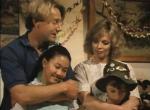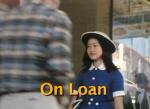AustLit
Latest Issues
AbstractHistoryArchive Description
Lindy believes she is a Vietnamese orphan, adopted by Marj and Geoff Baker when she was three years old. She lives happily with her adoptive family, only occasionally wondering about her past. This changes, however, when she receives a letter from her real father, Le. Having searched for many years, he is overjoyed to find her and tells her that he is coming to Australia to see her. The narrative explores the family's emotional turmoil as they wait for his arrival and their defensive attitude when he arrives. For Lindy, the meeting opens up a past she has never known as she is introduced to her Vietnamese family and culture. Le eventually tells Lindy that he wants her to return with him and she is subsequently torn between the two possible futures she is being given--one in Australia or one in Vietnam--and the two families she must choose between. She chooses to stay in Australia, but she makes it clear that she intends to visit and stay with her Vietnamese family when she is older. Although he is disappointed, Le has given Lindy a gift she never expected--a sense of identity she did not have before--and she tells him this in her letter to him. (Source: Australian Screen.)
Notes
-
Telemovie.
-
The trailer for this episode is available to view via YouTube: http://www.youtube.com/watch?v=zqrWg5jjCQo (Sighted: 7/9/2012)
Affiliation Notes
-
This work is affiliated with the AustLit subset Asian-Australian Children's Literature and Publishing because it contains Vietnamese characters.
Publication Details of Only Known VersionEarliest 2 Known Versions of
Works about this Work
-
Ethnicity, Agency, and Cultural Identity : Nexus and Difference in Australian Youth Films
1998
single work
criticism
— Appears in: Papers : Explorations into Children's Literature , August vol. 8 no. 2 1998; (p. 40-47) McCallum is interested in texts which deal with narratives of migration and cultural difference and representations of social and cultural diversity in children's literature, as '...attempts in film and literature to represent cultural diversity in Australian society are apt to proceed through quotation of iconic and stereo-typed images of difference...' (40). She analyses three Australian films, No Worries, Captain Johnno, and On Loan and argues that fundamentally the 'representations of social and cultural difference are ideologically shaped by an overarching metanarrative of subject formation which stresses the value of intersubjective relationships as a way of overcoming the alienation that occurs from cultural, social and physical displacement' (46).
-
Ethnicity, Agency, and Cultural Identity : Nexus and Difference in Australian Youth Films
1998
single work
criticism
— Appears in: Papers : Explorations into Children's Literature , August vol. 8 no. 2 1998; (p. 40-47) McCallum is interested in texts which deal with narratives of migration and cultural difference and representations of social and cultural diversity in children's literature, as '...attempts in film and literature to represent cultural diversity in Australian society are apt to proceed through quotation of iconic and stereo-typed images of difference...' (40). She analyses three Australian films, No Worries, Captain Johnno, and On Loan and argues that fundamentally the 'representations of social and cultural difference are ideologically shaped by an overarching metanarrative of subject formation which stresses the value of intersubjective relationships as a way of overcoming the alienation that occurs from cultural, social and physical displacement' (46).
- Bondi area, Sydney Eastern Suburbs, Sydney, New South Wales,





